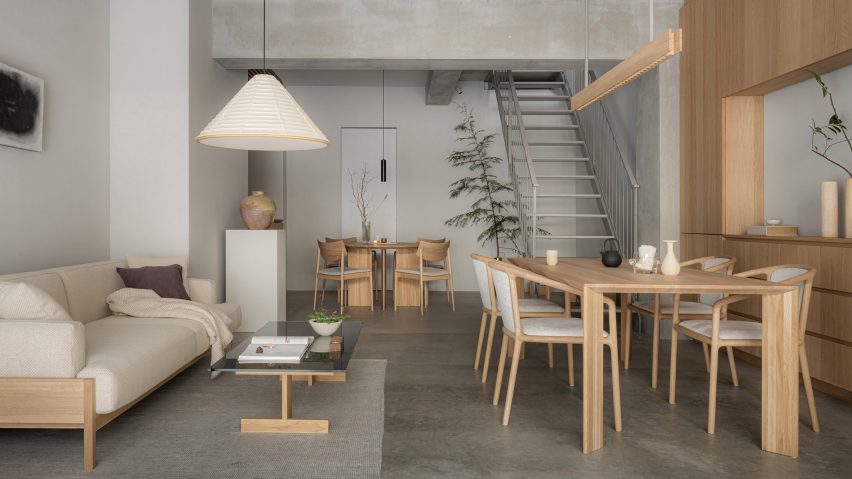
Karimoku opens Kyoto showroom informed by traditional houses and temple gardens
Designer Keiji Ashizawa has created the interior of Japanese furniture brand Karimoku's second showroom, which features a combination of its own wooden furniture and pieces by local artists and artisans.
Set in a three-storey building, the brand describes Karimoku Commons Kyoto as a "hybrid space", which will function as a showroom and also house office spaces for employees.
The space is located inside a former machiya – a traditional Japanese wooden townhouse – in Kyoto, a city known for its temples, Shinto shrines and gardens.
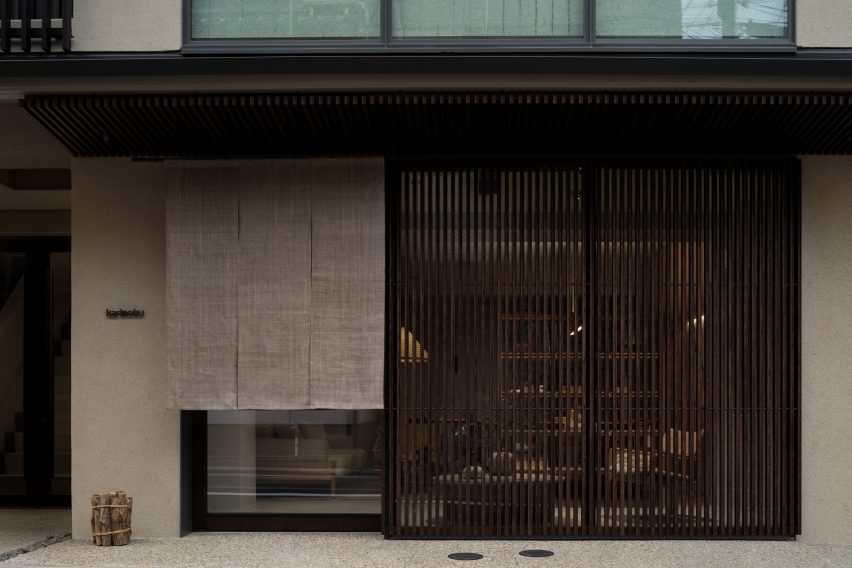
Ashizawa, who has worked with Karimoku for years and also designed its first showroom in Tokyo, looked to the history of both the city and the building when designing the interior.
"I really wanted to use the language of the townhouse and also took inspiration from Kyoto gardens," Ashizawa told Dezeen.
For the showroom's ground floor area, he drew on the doma areas in traditional Japanese homes, which had bare dirt floors and functioned as a bridge between the indoors and the outdoors.
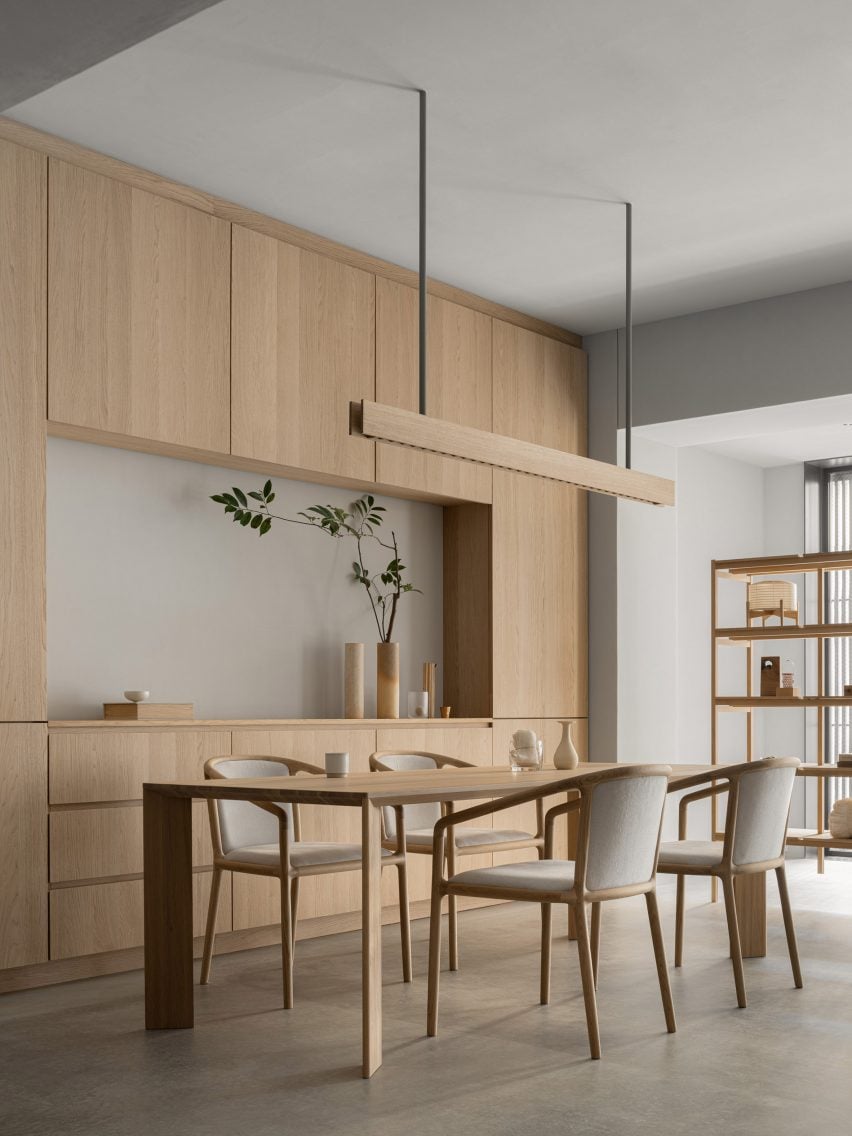
Here, Ashizawa placed furniture in light-coloured wood, including chairs by British architect Norman Foster and pieces by Danish studio Norm Architects and Ashizawa himself.
The floor is grey concrete, which was matched by pale-grey plaster walls and a ceiling in the same colour.
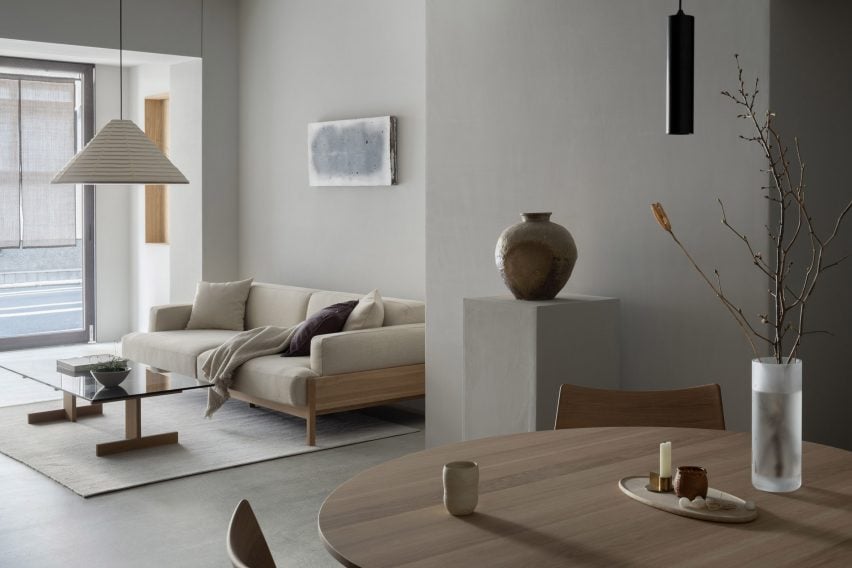
Wooden slats, of a kind traditionally used in Kyoto homes and stores to let light into buildings while maintaining privacy, cover parts of the glazing at the front of the room.
Light wooden panelling by Karimoku hides built-in storage spaces and functions as a shelf.
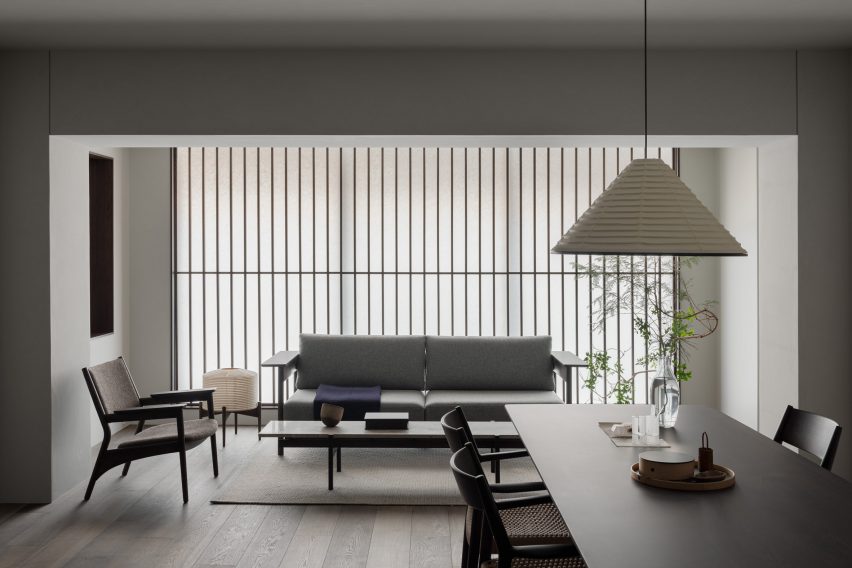
On the first floor, Ashizawa chose to use a darker colour palette, with furniture pieces in smoked oak wood and flooring and wall panels in dark wood.
"When you visit a tourism house or a temple in Kyoto, the old wood, like on the temple floors, is a very dark colour," he said. "I thought such a colour had to be the key colour [for the project]."
The layout of this area also drew on the walkways and paths of Kyoto's temple gardens.
"It's more of a guide to how to articulate the space," Ashizawa explained. "We can think of the furniture as an art piece or a stone – it's a kind of installation."
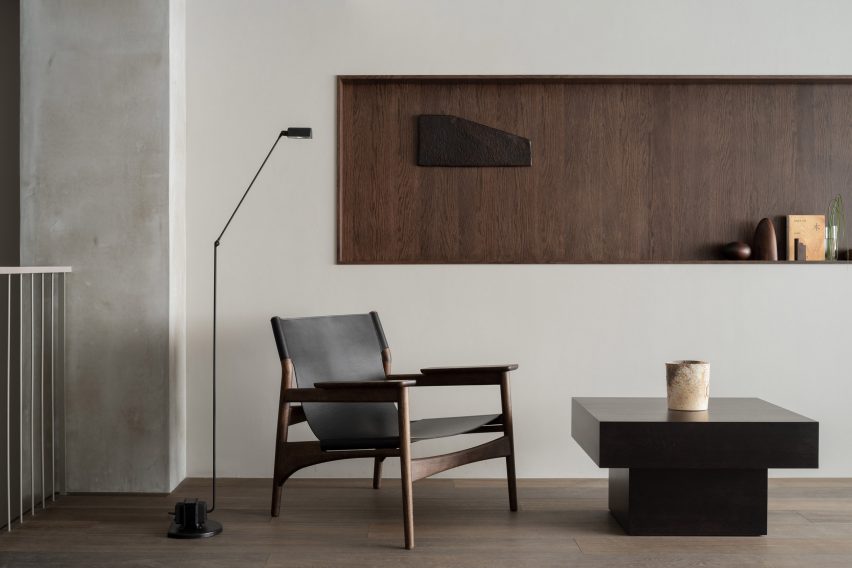
The top floor of Karimoku Commons Kyoto will function as a "library space" and showcase the latest collections and collaborations from the contemporary Case Study, Karimoku New Standard, MAS and Ishinomaki Laboratory brands.
Throughout the showroom, earthy ceramics and rough-hewn sculptures by Japanese artists were used as decoration, which add to the organic feel brought by the wood.
Pieces by ceramics brand Nota Shop in the nearby Shiga prefecture and vases by Kyoto artist Ai Ono were among the objects chosen for the space by stylist Yumi Nakata, who worked with Ashizawa on the project.
These were placed on tables and shelves as well as in wall recesses informed by traditional Japanese tokonoma alcoves, where homeowners would display artistic objects.
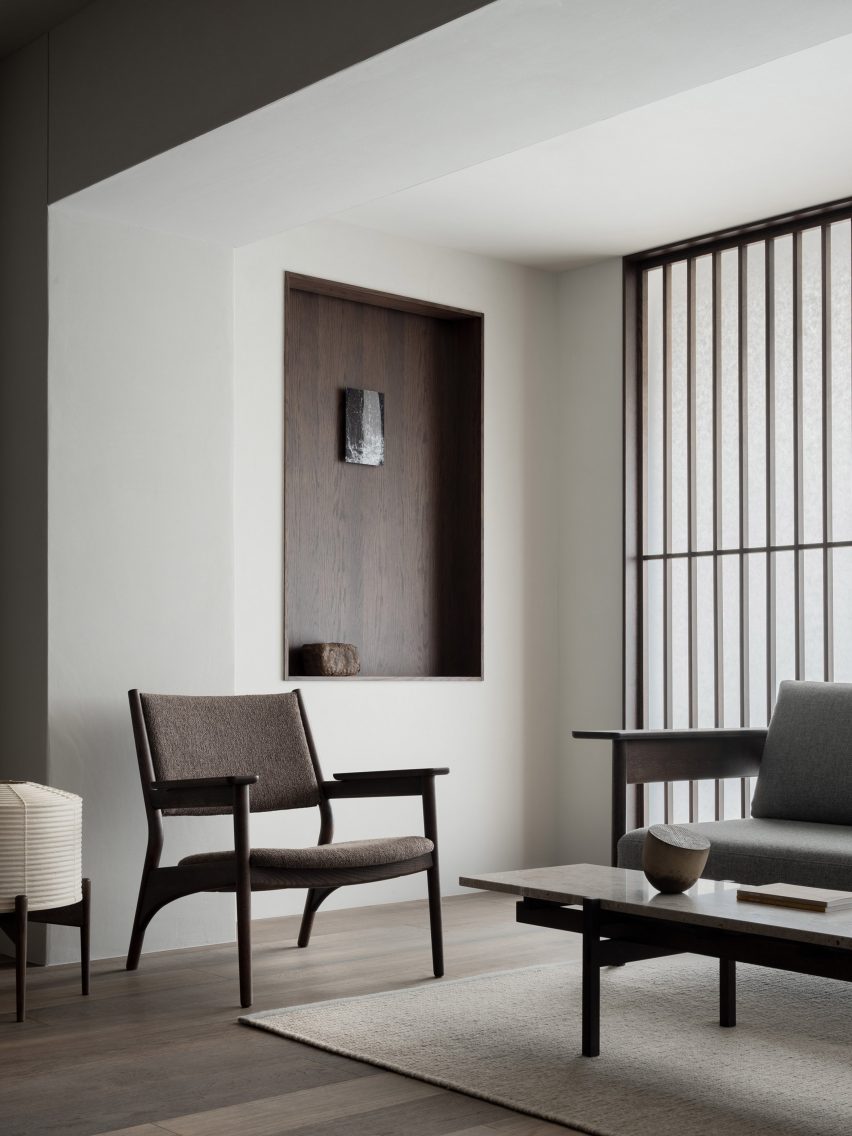
"There are so many places in which to show something," Ashizawa said of Karimoku Commons Kyoto.
"In a traditional Japanese house, there are many spaces like this, showing paintings, ceramics or flowers, which I think is one of the beauties of the culture of the Japanese house. In many ways, we tried to make such a space."
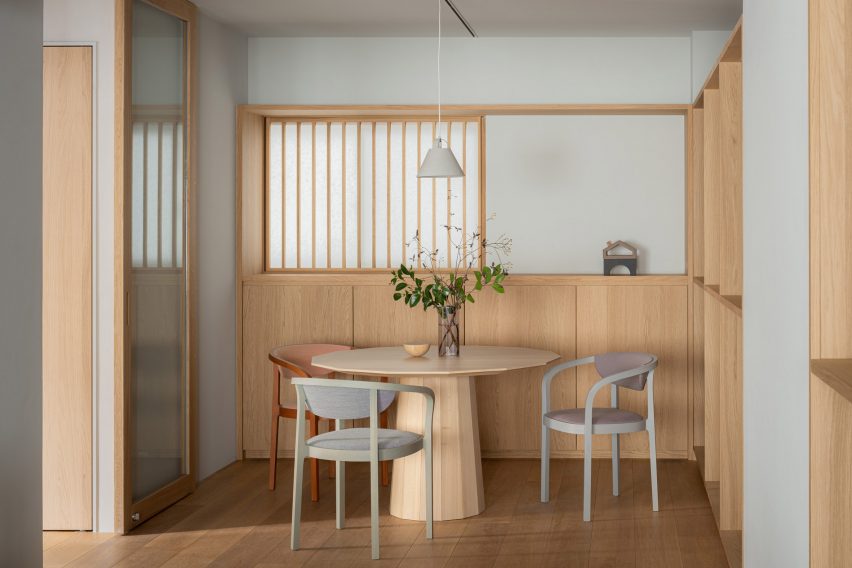
Karimoku, which is Japan's largest wooden furniture brand, started out making traditional Japanese furniture.
It now also works with a number of designers on the more contemporary sub-brands Case Study, Karimoku New Standard, MAS and Ishinomaki Laboratory, which are the four brands that will be sold in the Karimoku Commons Kyoto showroom.
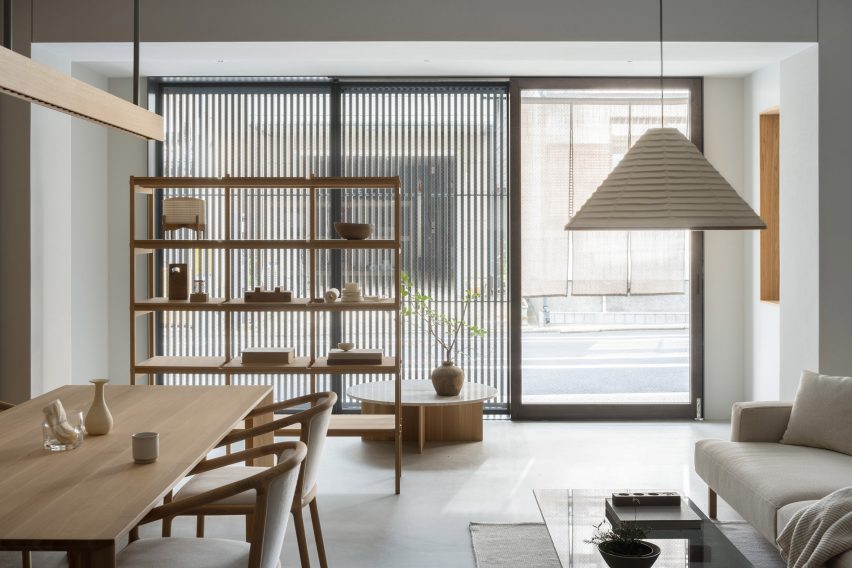
Ashikawa hopes the space will help to promote a modern design aesthetic.
"Karimoku is trying to promote modern furniture in modern life," he said. "I need to explain about the Japanese living space situation – for example, in 1960, sixty years ago, we didn't have much furniture in the living space."
"And then the modern living space came to Japan and people started buying their tables, chairs and even the sofa; it's quite new, so people don't necessarily understand how to use a sofa," he added.
"Japanese living spaces can be too messy, so it's quite nice to show them like this."
Previous projects by Ashizawa include a curve-shaped tofu restaurant and a Blue Bottle Coffee shop in Kobe. Karimoku recently collaborated with Foster on a collection of furniture used in the architect's Foster Retreat in Martha's Vineyard.
The photography is by Tomooki Kengaku.